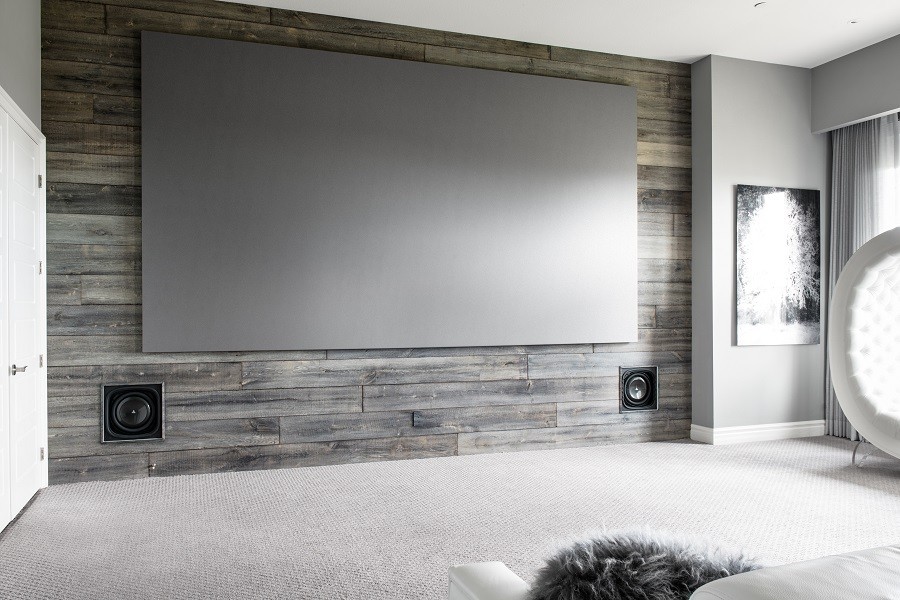FAQ: How Can You Optimize Your Home Theater Audio?
Finding the Ideal Home Audio System for Your Dedicated Theater
Cinemas in Salt Lake City and around the country remain closed or at limited capacity, which has led to a massive surge in home theater installations. With this newfound interest come a lot of questions. What does it take to craft a stimulating viewing experience in the comfort of home? How do you know if you have the right components or design?
With this in mind, we are starting a three-part series on common home theater questions ranging from the correct flatscreen display to the best theater seating. We are kicking things off with one of the most critical components of your favorite movies: audio. From the sinister strings that give you goosebumps during your favorite scary movies to the resounding explosions that shake the ground in action movies, sound carries the narrative forward just as much as the images on the screen.
That's why it's essential to ensure your home theater has an immersive home audio system that places you in the middle of the action. Below we outline what immersive audio is and what you need to accomplish in your own dedicated theater.
What is Immersive Audio?
If you’re still relying on your TV speakers to watch your favorite movies, you’re not getting the sonic experience you deserve. In recent years, even traditional surround sound systems fall flat. Most home theaters still use old 5.1 or 7.1 surround sound formats that produce two-dimensional sound.
Enhance your viewing experience by transitioning to immersive, 3-dimensional Dolby Atmos and DTS:X audio formats. Immersive audio formats let sound objects move freely around the room instead of being relegated to specific channels. Not only does this mean sound moves more naturally, but it also adds a height dimension not previously possible in a home theater environment.
The sound objects in an immersive audio format include descriptive metadata detailing where they should be located in the room, what direction to move, and how fast. Once your receiver decodes this information, it will work with your speaker combination to reproduce that sound within your room.
How Many Speakers Do You Need?
Though some soundbars offer Dolby Atmos, we recommend going with multiple speakers instead. The number of speakers in the room and their location becomes particularly important due to this communication between the receivers and speakers in a Dolby Atmos audio system.
Height is such an important factor for immersive audio that you’ll want to add in-ceiling speakers in front of and behind the listening position. Otherwise, the layout is relatively similar to traditional surround sound installations, with the number of speakers scaling depending on the room's size.
A 7.1 system becomes a 7.1.2 system with two in-ceiling speakers, a center speaker directly below or behind your screen, two speakers to the side of the screen, left and right surround speakers, and left and right rear surround speakers. A subwoofer rounds out the room—with additional ones recommended for a fuller bass sound.
What Type of Speakers Should You Use?
For exceptional sound in your theater, we recommend working with high-end audio manufacturers like Paradigm and KEF. Both companies offer in-wall and in-ceiling models ideal for immersive home audio systems that deliver sound from all sides without overwhelming the room’s décor.
Even though in-ceiling speakers are the ideal solution for Dolby Atmos immersive audio, there are some installations in which that isn't possible. Some of our audio partners—working in conjunction with Dolby Atmos—offer upward-firing speakers that bounce sound off the ceilings to get similar results.
While the focus is on the speakers, it’s also important to note you'll have to upgrade to a receiver compatible with Dolby Atmos and DTS:X (this is now standard in most new models). A professional should calibrate your receiver to ensure it is communicating correctly with your speakers.
SEE MORE: Should You Prepare Your Home for 8K Video Resolution?
Are you ready to start the journey to your brand-new home theater? Reach out to our team of AV experts by giving us a call, filling out our contact form, or chatting with us below. And make sure to come back next month for the second part of our series!


